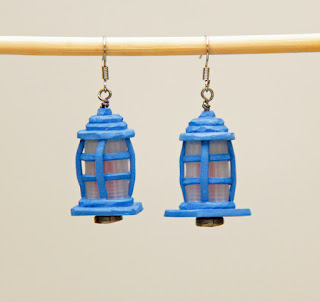“We need a lamp over this coffee station,” my husband said back in
2003. Rather than run out to a home improvement store, I took it on as a DIY
challenge.
I did a quick inventory of my crafts materials stash and decided I
would use the fall leaves I had gathered from the Blue Ridge Parkway, North
Carolina, the previous autumn season. Three types of big maple leaves will be
excellent for the lamp design I had in mind.
This was the lighting solution I created back then, hung above our apartment’s
coffee station. It served as a task light as well as a mood light for our nighttime
activities.
Our apartment’s wall décor evolved over the years, but the lamp
remained a fixture.
When we moved to our new home in 2007, the lamp became a nook light in
the living room.
In 2009, we transferred it from the living room to the bedroom, where it
became our nightlight until we moved overseas in early 2015.
Because it would be impractical to ship the lamp halfway across the planet,
and getting rid of the leaves was out of the question, I decided to dismantle
the lamp and transport the three leaf panels.
Last week, at about the same time I picked up these fallen maple leaves
13 years ago, I built the lamp again. It hangs in its new location in our
bedroom, to continue to serve as our nightlight for many more years.
Here’s a quick overview of how I made the leaf lamp:
Each pressed leaf is white-glued between plain white tissue paper and a
transparent sheet protector. This sandwich is framed in cardboard, folded so
that there’s a 2-inch tab to elevate the leaf panel from the base. Slip-in tabs
attach the panels to the baseboard without adhesive.
The baseboard is a sturdy recycled cardboard folded and taped to form a
box-frame that’s hollow in the back. I cut slits on the baseboard to coincide
with the slip-in tabs of the leaf panels.
The first time around, I used crumpled gold gift wrap to cover the
cardboard base. This time I painted the baseboard with a metallic bronze shade
to jibe with the brownish leaves.
The electrical elements are the basic wire, switch, plug, sockets, and
lightbulbs. The lighting setup uses the traditional parallel wiring. The electrical
is taped to the back of the box-frame, with each light sticking out through the cardboard base,
centered behind each leaf.
These autumn leaves have been with us since the fall of 2002. And it looks like they will stay with us for much longer. That’s
rather impressive.

















































